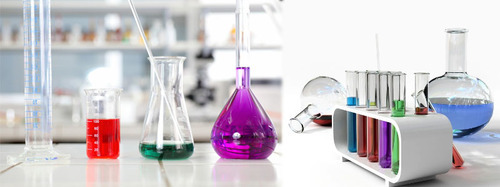As a result of technological progress, the Laboratory Glassware and Plasticware market has grown tremendously
Laboratory glassware and plasticware, which
include instruments such as beakers, burettes, funnels, condensers, pipettes,
bottles, and so on, are used for scientific research. Plasticware is a
selection of equipment mixture of different types of plastic materials, whereas
laboratory glassware is manufactured of borosilicate glass. Plasticware is more
flexible and easier to handle, whereas glassware, despite its brittle nature,
is best suited for conducting vigorous reactions and heating chemicals.
The growing use of glassware and plasticware
for clinical use in hospitals and forensic laboratories, as well as scientific
studies in pharmaceutical drug discovery, health sciences, and agricultural
production, is expected to be the primary drivers of growth. Furthermore, the
increasing prevalence of chronic diseases has resulted in the development of
new drugs, which has fueled the global laboratory
glassware and plasticware.
What exactly is laboratory plasticware?
Laboratory Plasticware
is a collection of appliances or instruments used in laboratories that are made
of various types of type of plastic. Plastic Beaker, Plastic Bottle, Plastic
Funnel, Plastic Vial, Plastic Pipettes, and so on are examples of plasticware.
What are the benefits of using glassware over plasticware?
In laboratories,
glassware has long been used before plasticware. The following are the primary
benefits of glassware: High clarity allows for visibility of contents and
accurate volume recording. Sealed glass containers are impermeable to
atmospheric gases, preventing oxidative degradation of the contents.
Furthermore, an increment in biological and
biotechnology research, such as developing drugs, scientific research, and
regenerative medicine, is expected to dominate the growth laboratory glassware
and plasticware. The Laboratory Glassware and Plasticware has grown
tremendously as a result of technological advancement and an increase in the
rate of adaptation in hospitals, forensic laboratories, and research
institutes. Another factor driving growth is the shifting inclination toward
the laboratory automation process. Furthermore, the cost-effectiveness of
plastics is imposing a positive outlook on growth.
Furthermore, the rising prevalence of chronic
diseases has prompted the development of new drugs, which has fueled the global
Laboratory Glassware and Plasticware. The strength and elastic modulus of glass
(due to a low preference for glassware) and a lack of funds (due to fewer
research activities, affecting both Laboratory Glassware and Plasticware) are
the main determinants limiting growth. However, the breakable nature of
glassware and a lack of funding in some research institutes are two factors
that are expected to stymie growth.




Comments
Post a Comment